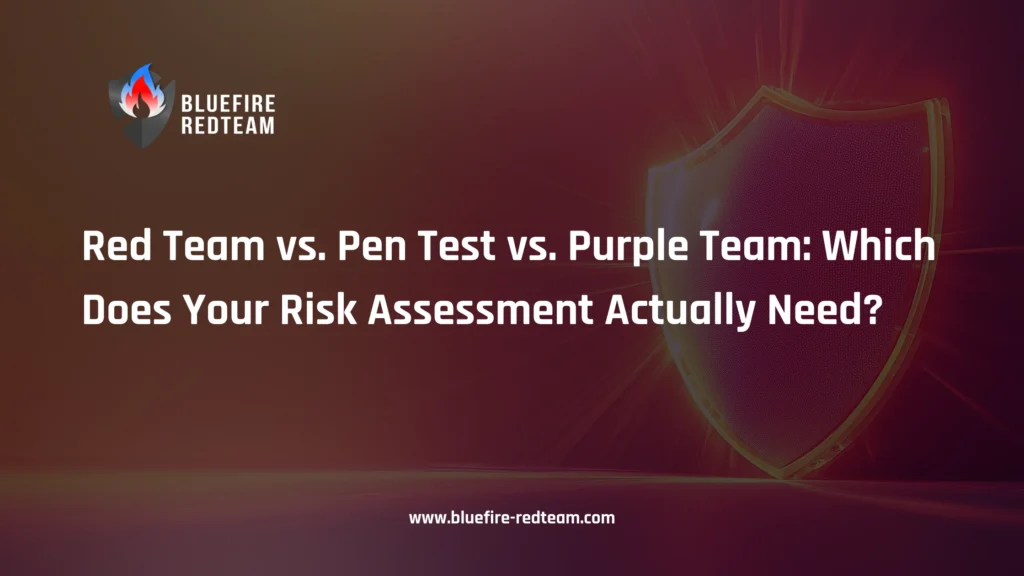Executive Summary: The “Which Test?” Moment Every CISO Faces
Every CISO eventually reaches the same question during their annual risk cycle:
“Should we commission a red team this year—or are we still in pen-test territory?”
It’s not an easy call. Each testing method—Pen Test, Purple Team, and Red Team—serves a distinct role in validating different layers of security maturity.
Choosing the wrong one wastes budget.
Choosing the right one turns your risk assessment into evidence of resilience.
This guide explains what each approach actually offers, how to match it to the maturity of your company, and how to confidently communicate that choice to your board.
The Core Difference: Scope, Purpose, and Outcomes
At first glance, these sound similar—they all “test security.”
But in practice, they measure completely different outcomes.
| Test Type | Core Purpose | Typical Scope | Primary Stakeholders | Output |
|---|---|---|---|---|
| Penetration Test | Identify exploitable weaknesses | Narrow (systems, apps, or networks) | IT Security / Engineering | List of vulnerabilities & proof-of-exploit |
| Purple Team | Strengthen detection & response collaboration | Tactical (specific TTPs or detections) | SOC / Blue Team / IR | Improved alerts, refined playbooks |
| Red Team | Validate true resilience through adversary simulation | Enterprise-wide | CISO / Risk / Operations | Measured detection, containment & business impact |
Think of it as a maturity ladder:
Pen test → Purple team → Red team.
Each builds on the previous one.
Pen Testing — The Foundation: “Are My Doors Locked?”
Pen tests are designed to find vulnerabilities before attackers do.
They focus on breadth and exposure—technical weaknesses, patch gaps, and misconfigurations.
When to use it:
- You’ve deployed new applications or infrastructure.
- You need compliance-driven assurance (SOC 2, ISO, PCI, etc.).
- You’re still maturing your detection or SOC functions.
What it delivers:
- Proof-of-exploit reports
- Prioritized remediation guidance
- Assurance for regulators or auditors
When not to rely on it:
Pen tests stop once they find a way in—they rarely test how your team responds once the breach begins.
Read More:
- Penetration Testing Checklist: 15 Steps to Secure Your Business
- What Does a Penetration Testing Report Include?
- VAPT(Vulnerability Assessment & Penetration Testing)
- Penetration Testing As A Service: Secure Your Customer Data
- What Is The Primary Goal Of Penetration Testing?
- PCI DSS Compliance Penetration Testing, All You Need To Know!

Purple Teaming — The Collaboration Layer: “Can We Catch the Attack?”
Purple teaming bridges the gap between offense and defense.
Your red teamers and blue teamers work together to test detections in real time.
When to use it:
- Your SOC is operational but detection coverage is uncertain.
- You’re building use-case-driven detection logic (MITRE ATT&CK alignment).
- You want faster improvement cycles than red teaming allows.
What it delivers:
- Detection logic improvement
- Incident response playbook validation
- Real metrics on mean time to detect (MTTD) and respond (MTTR)
When not to rely on it:
Purple teaming is great for learning, not proof. It’s not an independent measure of resilience.
Read More:
Red Teaming — The Validation Layer: “Can We Survive the Attack?”
Using the same tactics, perseverance, and goals as real threat actors, a red team engagement simulates actual adversaries.
It doesn’t ask “Can we get in?”—it asks:
“How far could a real attacker go before we notice, contain, and recover?”
When to use it:
- Your organization already has mature detection and response.
- You’re preparing for board-level or audit risk reporting.
- You want to validate both technical and business resilience.
What it delivers:
- Independent proof of your team’s readiness under live attack simulation
- Quantifiable resilience metrics (time to detect, time to contain, time to recover)
- Board-ready reporting on true risk exposure
When not to rely on it:
You will only confirm what you already know is flawed if your fundamental detection controls (MFA, EDR, and logging) aren’t strong enough yet.
In that case: start with purple, then graduate to red.
Read More:
- Do You Need Red Teaming? A CISO’s Practical Evaluation Checklist
- Defining Red Teaming Objectives: How to Align with Your Business Risks and Security Goals
- Enterprise Red Teaming: Ranked & Compared for CISOs
- Best Enterprise Red Teaming Services (Ranked & Compared)
- Red Team Assessments: The Ultimate Guide to Enhancing Your Cybersecurity Posture
- Elevate Security: The Power of Red Teaming

Quick Diagnostic: Which Test Fits Your Risk Assessment?
Here’s a simple way to decide where your organization sits:
| Question | If “Yes” → You Need |
|---|---|
| Do you still find unpatched CVEs or misconfigurations? | Pen Test |
| Is your SOC unsure if alerts cover known TTPs? | Purple Team |
| Has your board requested assurance of detection and response under attack? | Red Team |
| Are you merging or migrating critical systems to cloud? | Red Team |
| Do you have no formal detection KPIs? | Pen or Purple Team |
Tip: Leading CISOs don’t choose one—they layer all three throughout the year:
- Pen tests for surface assurance
- Purple teams for detection maturity
- Red teams for executive validation
Integrating Red Teaming Into Your Risk Assessment Framework
Red teaming enhances your enterprise risk management (ERM) process by providing:
- Control Assurance — verifies that your defensive investments work in practice.
- Audit Evidence — offers independent proof of control effectiveness.
- Quantitative Risk Inputs — translates security data into measurable impact.
- Board Communication — simplifies technical results into strategic metrics.
In short, it moves cybersecurity from assumption to evidence in your risk model.
Budget & ROI: Choosing Where to Invest
| Exercise | Frequency | Typical Cost Range | ROI Focus |
|---|---|---|---|
| Pen Test | 2–4x per year | $5K–$50K | Vulnerability reduction |
| Purple Team | 1–2x per year | $20K–$80K | Detection performance |
| Red Team | 1x per year | $50K–$200K | Business resilience validation |
ROI metric to communicate to the board:
“Cost per hour of detection improvement” and “% of controls validated under live simulation.”
The Maturity Path: Crawl → Walk → Run
| Stage | Objective | Recommended Test |
|---|---|---|
| Crawl | Build foundational hygiene & compliance | Pen Test |
| Walk | Validate and tune detections | Purple Team |
| Run | Validate full organizational resilience | Red Team |
No single test covers it all—together, they create a continuous assurance cycle.
Key Takeaway: Match the Test to Your Maturity, Not the Trend
Although a red team isn’t always the solution, when it is, it offers unique insights.
Your goal isn’t to “get hacked on purpose.”
It’s to know exactly how your organization would respond if it happened tomorrow.
Book a 30-Minute CISO Readout
If you’re evaluating where red teaming fits into your 2025 roadmap, our senior Red Team Lead can help you:
- Identify your current testing maturity
- Recommend the right engagement mix
- Provide an ROI baseline for your board


